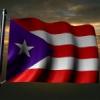MSU has released a free webinar Massive Open Online Course to ( MOOC) that is in regards to Food Fraud, Assessments, and planning. It also incorporates an open forum for personnel that have joined the webinar to communicate with the professors/hosts of the webinar most educated in the Food Fraud.
http://www.eventscri...MTY2NDU2MzB8LTE
Hi arianna,
Based on the detailed price menu at the end of link, partially free might perhaps be a more accurate description. 
Looks to be based on, afaik, one nominally free tool which is discussed in previous Posts here (SSAFE) and another which is not free except for perhaps a one week trial (USP).
I also note these SQF8 comments -
From the SQF8 Guidance -
SQFI recommends that suppliers initiating their food fraud strategies seek assistance from one of the many resources that are available on-line. Although SQFI lists these resources, we take no responsibility for the information they provide or the outcomes of the assistance they offer.
SQFI partners with the Food Fraud Initiative at Michigan State University (MSU) http://foodfraud.msu.edu. This group offers free on -line training for sites and auditors on food fraud called Massive Open On-line Courses or MOOCs.
Other resources that could be considered include the PwC food fraud vulnerability assessment, and the USP Food Fraud Database.
Hmmm. Free Business Opportunities ?.
As previously discussed, SQF's Code usage Food Fraud/ "vulnerability"/terminologies seem somewhat dissimilar to BRC.
(eg see this link and preceding posts in same thread -
http://www.ifsqn.com...es/#entry113659
Additionally from the SQF8 Guidances - Vulnerabilities’ need to be identified in incoming materials and ingredients, and within the site.
eg SQF8 Manufacturing / Quality Food Fraud Guidance (2.7.2 / 2.7.1) -
GFSI now requires that a food fraud vulnerability assessment and mitigation plan to be incorporated into the food safety management systems in all GFSI benchmarked schemes. SQF in edition 8 now requires food fraud to be considered for the site (2.7.2), and for incoming materials and ingredients (2.4.4.5, 2.4.4.6).
Within the site, vulnerabilities may include the potential for intentional or accidental substitution, dilution, or adulteration.
cf BRC7 (IG) - It is important to note that the aim of the [vulnerability] assessment is not to assess the potential for fraud at the site, but to examine the supply chain for potential concerns or weaknesses and therefore to identify those raw materials that are of particular risk of adulteration or substitution, so that appropriate controls can be put in place.
(although should note that the existence of a site having inequate" detection procedures is effectively considered a "vulnerability" in BRC7 Code [5.4.2])
It will be interesting to see how SQF users of the Manufacturing Module only separate Food Fraud associated with Safety from the non-Safety "variety".



















